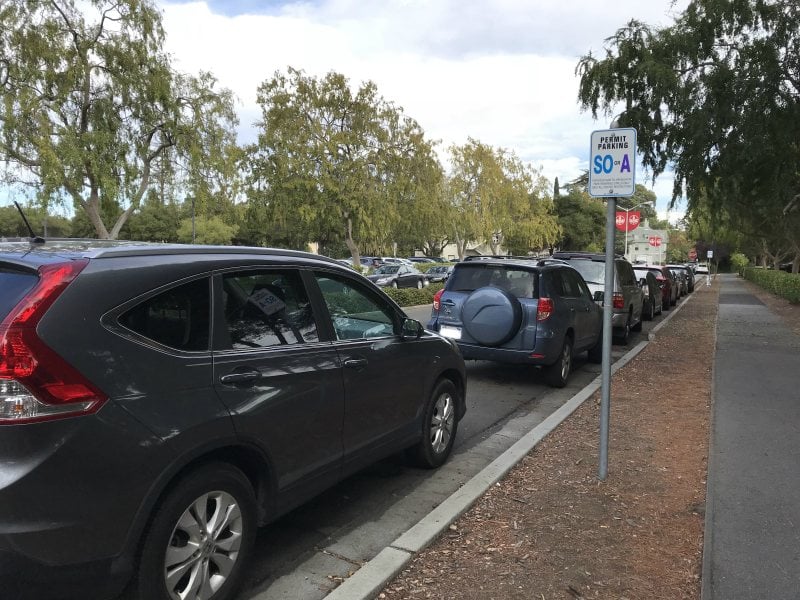Stanford Parking & Transportation Services (P&TS) launched a new virtual parking system at the beginning of this academic year, shifting student permit purchases to an online platform. Formerly, the parking permit system required physical permits.
According to P&TS executive director Brian Shaw, P&TS implemented the new virtual system to modernize its permit database, streamline the ordering process, enable the office to manage its programs remotely and make the program more environmentally sustainable.
To apply for a permit, applicants must register their vehicle by entering relevant vehicle information, such as license plate, make, model and color. Once registered, enforcement officers can scan the license plates of vehicles parked in Stanford-enforced parking lots and garages to create a virtual permit. The mobile, hand-held or vehicle-mounted scanning system will automatically identify parking violations.
Turning a vehicle’s license plate into a virtual permit — rather than a sticker or hang tag — allows students to purchase permits immediately, eliminating the time previously needed to obtain the physical permit from the P&TS office or wait for its arrival in the mail.
Additionally, the new online system offers greater flexibility for drivers by letting them register multiple vehicles with the same parking permit.
The P&TS office is relocating to the Stanford Redwood City campus in 2019, Shaw said. Because the office will no longer be on campus to distribute physical permits, the new virtual system is essential.
Digitalization of permits also removes the threat of lost or stolen permits and offers an environmental benefit to boot.
“Before the new system was implemented,” Shaw said, “we printed tens of thousands of physical permits and replaced hundreds of lost permits each year.”
Overall feedback about the virtual permit system has been positive, Shaw said. Registrants have told P&TS that they appreciate the simplicity of the new permit application process and the alleviated burden of having to keep track of a physical permit.
“The application process was super easy to follow,” said Jahnavi Deb ’21, a first-time parking permit applicant. “I didn’t run into any issues at all, even though I noticed that the system just recently changed.”
Alejandra Young ’20, a parking permit holder under both last year’s old system and this year’s new one, agreed that the process was convenient.
“I found the parking permit system very efficient this year … especially because I did not have to go anywhere in-person,” she said. “Last year, my parents helped me move in, so they went in person and purchased the pass for me. This year, they seemed to think it was super easy.”
Young estimated the entire registration process took 5-10 minutes.
Shaw did note that some customers have encountered technical issues, which they are working to address.
The virtual parking management system will continue to be implemented over the upcoming year, happening in phases based on permit type. Currently, P&TS is in the process of enacting improvements and next-phase features while simultaneously assessing the efficiency of the new system.
“On balance, we have been pleased that the number of customer concerns have been fewer than you might expect for a change of this magnitude,” Shaw said. “The positive comments we’ve been receiving also affirm the benefits we anticipated from this new system.”
Contact Alex Tsai at aotsai ‘at’ stanford.edu.
